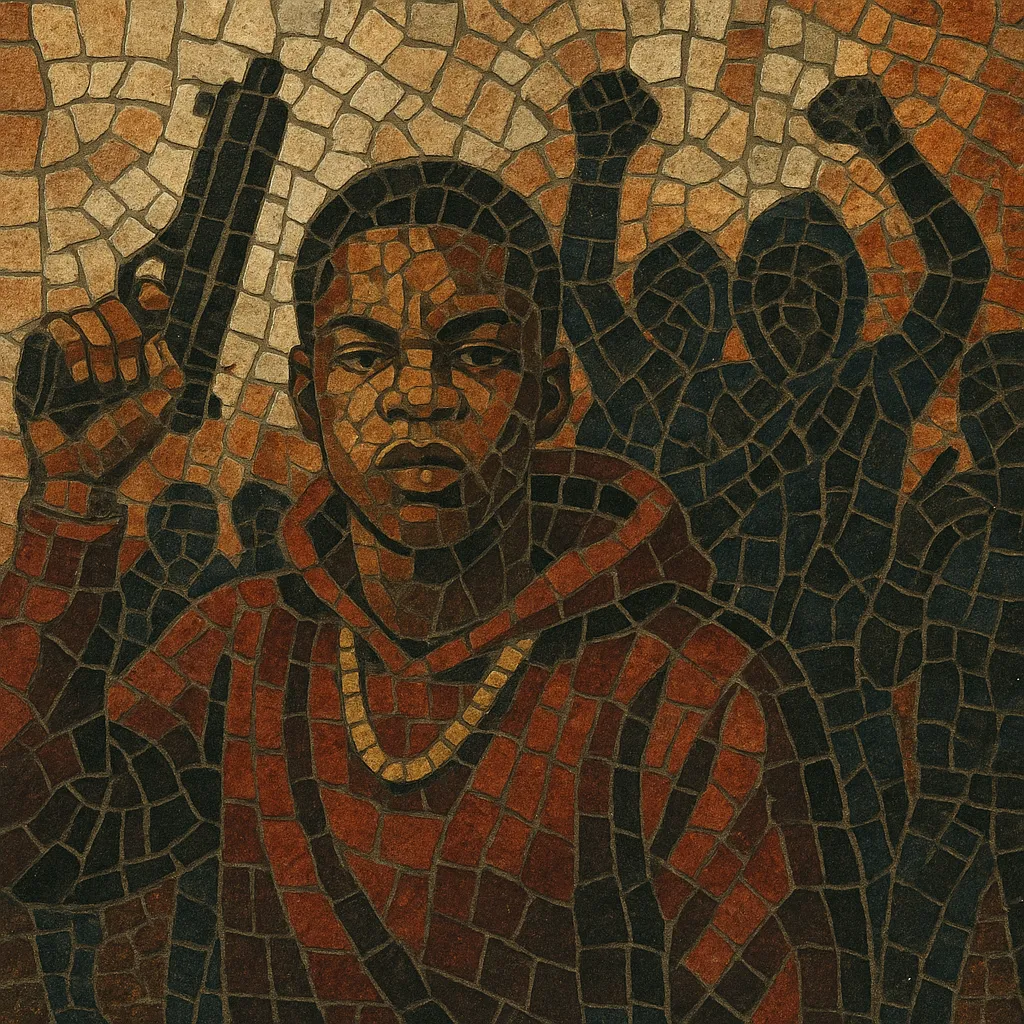Philly drill is a regional strain of drill rap from Philadelphia that fuses the genre’s gritty street narratives with the bouncy, percussive energy of East Coast club music. It typically runs at a brisk 135–150 BPM and blends sliding 808s and drill hi-hats with Jersey/Philly club-style kicks, clap patterns, and chopped vocal stabs.
The sound favors staccato, chant-like hooks, group ad-libs, and call-and-response moments designed for dance challenges and crowd participation. Lyrically, it balances aggressive, competitive posturing and neighborhood storytelling with a party-forward, dance-ready mood driven by viral choreography and social-media culture.
Philadelphia’s street-rap tradition and the first wave of drill (Chicago and later UK) laid the lyrical and rhythmic foundation. At the same time, the city’s proximity and overlap with Jersey/Philly club culture introduced faster BPMs, bed-squeak cues, and stomping kick patterns that were not typical of earlier drill.
By the late 2010s, young Philly artists began rapping over club-influenced drill beats, pushing tempos upward and favoring chantable hooks tailored to neighborhood dance moves. As TikTok and Instagram Reels accelerated music discovery, the style’s dance-centric energy found a natural home online, making short, high-impact songs ideal for viral challenges.
Through 2022 and beyond, a wave of singles and dance crews helped codify “Philly drill” as distinct from New York and UK variants. Tracks often mixed dark drill bass with playful club percussion and crowd vocals, encouraging synchronized routines. Collaborations with Jersey club producers and the broader East Coast club scene further defined the hybrid, while national attention to high-BPM club rap gave the Philly drill sound additional momentum.
Philly drill is performance-driven: it thrives on energetic call-and-response, posse-style ad-libs, and choreography ready for stages, gyms, and block parties. While the lyrics retain drill’s competitiveness and neighborhood realities, the beats and hooks aim squarely at movement and mass participation.
Work between 135–150 BPM. Use a driving, danceable grid that merges drill’s triplet hi-hats with Jersey/Philly club kick patterns, stomp hits, and occasional bed-squeak cues. Keep the groove bouncy rather than plodding.
Layer tight claps and crisp snares on 2 and 4, accenting with off-beat percussive shots and toms. Program sliding 808s that outline simple, menacing motifs; glide into target notes to create momentum under the fast top-line drums.
Keep harmony minimal—often just a dark, two- or three-chord loop or a sparse texture with filtered synths and vocal chops. Short, catchy samples (e.g., pitched vocal stabs) help signal drops and dance cues. Sidechain melodic elements lightly to the kick to preserve club punch.
Use concise, chant-like hooks that invite crowd participation and dance call-outs. Verses can be aggressive and competitive, but keep lines rhythmically snappy so they lock with the uptempo beat. Group ad-libs and gang vocals amplify the party energy.
Aim for 2–2.5 minutes with quick intros, an early hook, and frequent drops. Use risers, snare rolls, and mute-breaks to tee up choreography moments. Leave brief instrumental gaps to showcase dances and call-and-response.
Prioritize kick impact and 808 clarity; carve space at 50–80 Hz for the sub and boost 2–5 kHz for vocal presence. Keep masters loud but not harsh; transient shaping on kicks and claps helps maintain slam at fast tempos.


